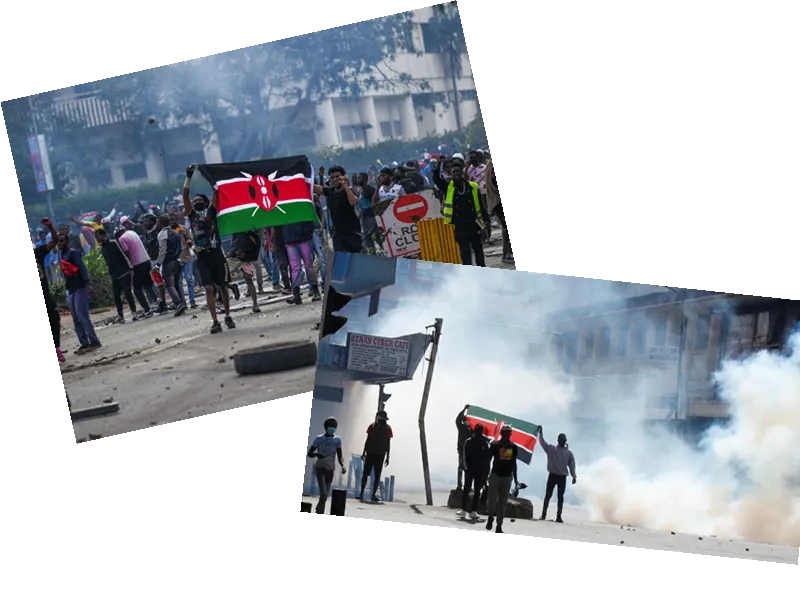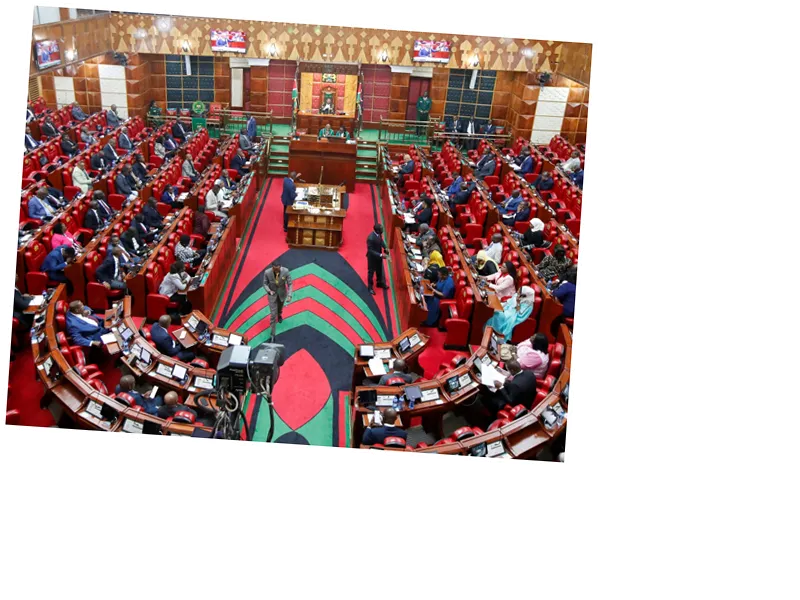Kenyan police confronted demonstrators in the capital's neighborhoods as protesters vowed to storm the presidential residence despite President William Ruto's withdrawal from proposed tax increases. The unrest erupted against the backdrop of a draft law for the year 2024, which aimed to collect additional taxes worth $2.7 billion to reduce the budget deficit. The country's debt amounts to $82 billion, with interest payments consuming 37% of annual revenues.
Protesters demanded the government completely abandon the draft finance bill, stating that tax increases would harm the economy and raise the cost of living. The economic crisis has seen the value of the Kenyan shilling fall by 22% against the US dollar since 2022, causing prices of food, transport, and energy to soar while incomes remain largely unchanged. Despite the president's withdrawal of the draft law, limited protests continued in several regions, with demands for the president to step down.
The International Monetary Fund (IMF) supports the need for increased revenues to reduce the budget deficit and government borrowing. Last week, the government showed flexibility by canceling some proposed fees, including new taxes on car ownership, bread, cooking oil, and money transfers. However, representatives passed the finance bill in its second reading, transferring the disputed tax proposals to the next approval stage.
The intensity of the protests decreased after President Ruto announced the withdrawal of the draft law, pledging not to sign the tax-raising bill. He expressed his intention to launch a dialogue with Kenyan youth and work on austerity measures, starting with reducing presidential expenses. Critics accuse Ruto of pandering to Western-led institutions such as the IMF, which supported the now-rejected tax reforms as part of a loan facility necessary to preserve debt sustainability.
The unprecedented protest movement led by youth emerged shortly after the presentation of the 2024-2025 budget, which included a VAT of 16% on bread and an annual tax of 2.5% on private vehicles. Tuesday's demonstration near the National Assembly turned violent, with police firing live ammunition to contain the crowd. According to NGOs, 22 people were killed, including 19 in Nairobi, and more than 300 were injured. President Ruto's withdrawal of the draft budget was seen as too weak and too late by some protesters, who called for a white march in memory of the victims.
- President Ruto's decision to withdraw the draft budget may help accommodate the protests, but he remains stuck between the demands of lenders like the IMF and citizens suffering from the high cost of living. The IMF had lent Kenya $2.34 billion to resuscitate the economy after the COVID-19 pandemic and reduce debt-related vulnerabilities by increasing revenues while controlling expenditures.
- The IMF expects Kenya's inflation rate to be around 5% in 2024, increasing to 5.3% in the next two years. Kenya's revenues are expected to increase by 19% of GDP during the current year, 19.1% in 2025, and 19.5% in 2026. The economy is expected to grow 5% in 2024 and 5.3% in the next two years. However, the government must monitor risks facing the planned fiscal consolidation process and activate contingency plans as needed.
- Human rights defenders have accused the authorities of kidnapping demonstrators, and the UN Secretary-General called for responsibilities to be clearly established after the death of the demonstrators. The government's withdrawal of most tax measures came after significant public pressure, but the complete withdrawal of the text was demanded by the demonstrators. The public debt amounts to around 10,000 billion shillings, or around 70% of GDP, with the 2024-25 budget providing for record spending of 4,000 billion shillings.






